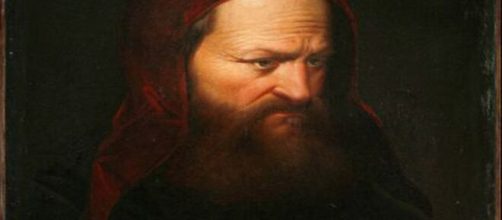Can it be that the Trump legacy of uttering easily proved untruths – which the Republican party has fallen heir to – has infected the Art world’s bloodstream?
Claim to fame
The Art Newspaper reports that the owner of a painting “found” in a “bric-a-brac store” in a small French town claims it is a self-portrait of the 16th-century Italian Renaissance painter Benvenuto Cellini. Why does he think that? An inscription in a corner of the work says so: “Tête d’homme, Benvenuto Cellini.” Worth millions, if true. But is it?
The Trumpian way
Never mind The Art Newspaper’s view that the portrait looks more like a painting made in the 19th century than the 16th, and never mind that the inscription is not in Italian, but French.
Claiming the work as a genuine Cellini might be a little like Trump saying he owns Renoir’s “Two Sisters” even though the original hangs in the Chicago Institute of Art for anyone to see.
As stated in The Art Newspaper, the man who found the painting, Oleg Nasobin, a maker of Russian beauty products, spotted the portrait in 2005. He’s also said to be a publicist for Rucompromat, a Russian website, and an actor who had a part in the British TV series McMafia. Add one more tidbit to his resume: the Russian press has reported Nasobin’s problems with Russian banks.
Pushing on and bent on authenticating the Cellini portrait, Nasobin sought out experts to verify his find, such as a retired dealer in antiques and jewelry who certified the work.
Media blitz
His tale of discovering a self-portrait by Cellini has been turned into a 10-part BBC Radio series to be aired on March 22 and April 2, narrated by a professor of Renaissance studies at Queens Mary University in London - Jerry Brotton. Also among the certifiers was Sarah Walden, a conservator in England, who said both that the portrait “undoubtedly” dates from Cellini’s time; but also that “the inscription was the 19th century.”
Good question
While acknowledging that painting was made on the 16th century unique silk-wool paper glued on a canvas, Archaeology Newsroom asks how, after hundreds of years, this supposed self-portrait of Cellini has survived in “exceptionally good condition and with virtually no restoration.”
The portrait’s “exceptionally good condition” is even odder since it was found in a village bric-a-brac store.
Stay tuned, says Archaeology Newsroom: “All new developments around this self-portrait are ‘breaking news events.” Case in point: BBC Radio report that the presumed Cellini self-portrait is now on the market for $100 million.
Painting versus sculpture
But wait, Brotton, the professor of Renaissance Studies, reminds us all that Cellini worked in gold and silver, bronze and marble.
'He didn’t paint! Or did he?'
OK, my turn. Cellini’s letters provide an answer. One missive, in particular, dated 15 47 to Benedetto Varchi, a poet and historian, spoke of his belief that sculpture is a higher art than painting.
“Sculpture is the mother of all the arts,” Cellini told Varchi. “A painting is nothing better than the image of a tree, man, or other object reflected in a fountain. The difference between painting and sculpture is as great as between a shadow and the object casting it.”
Would an artist who coveted sculpture so much bother to paint anything, let alone a picture of himself?


